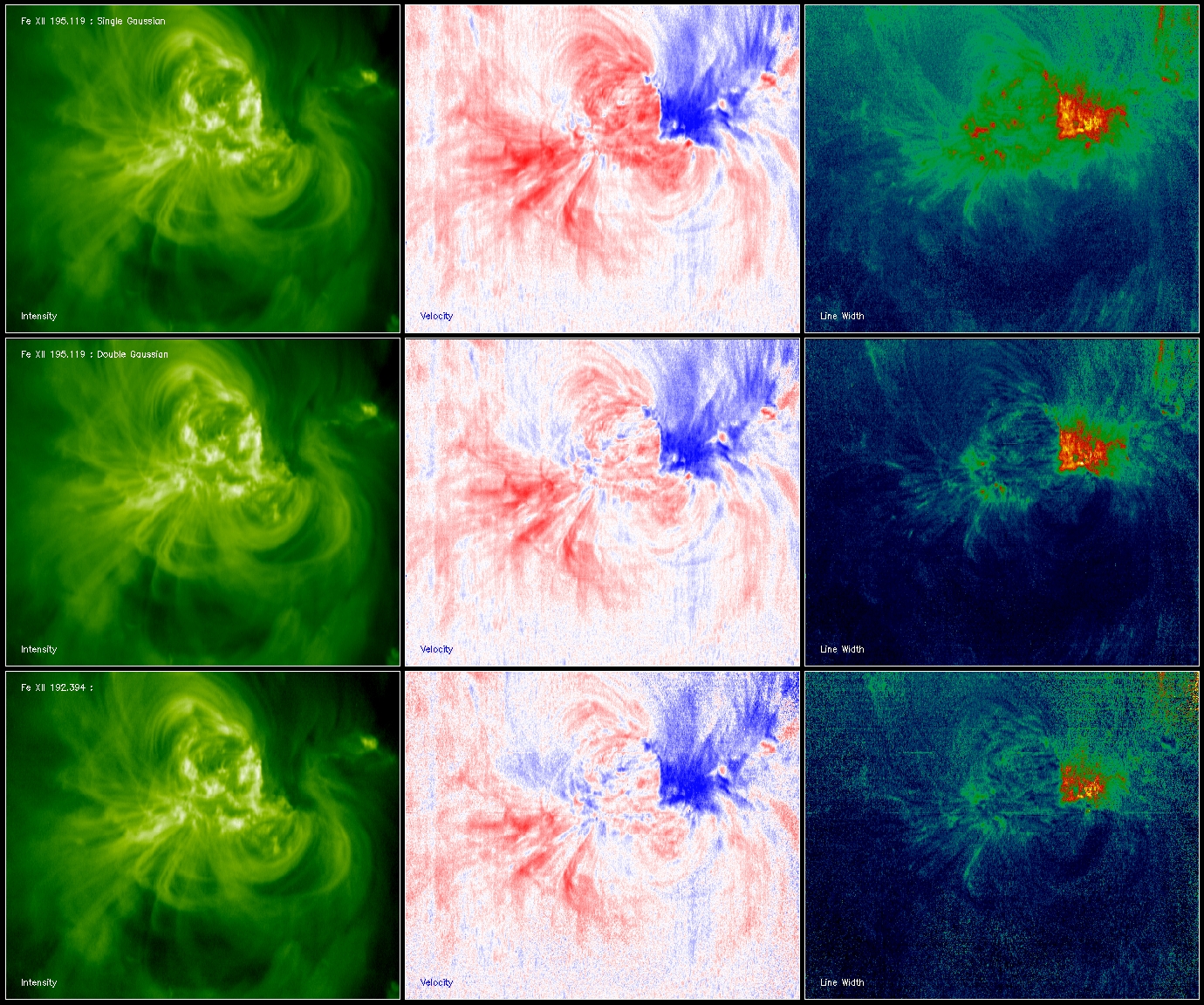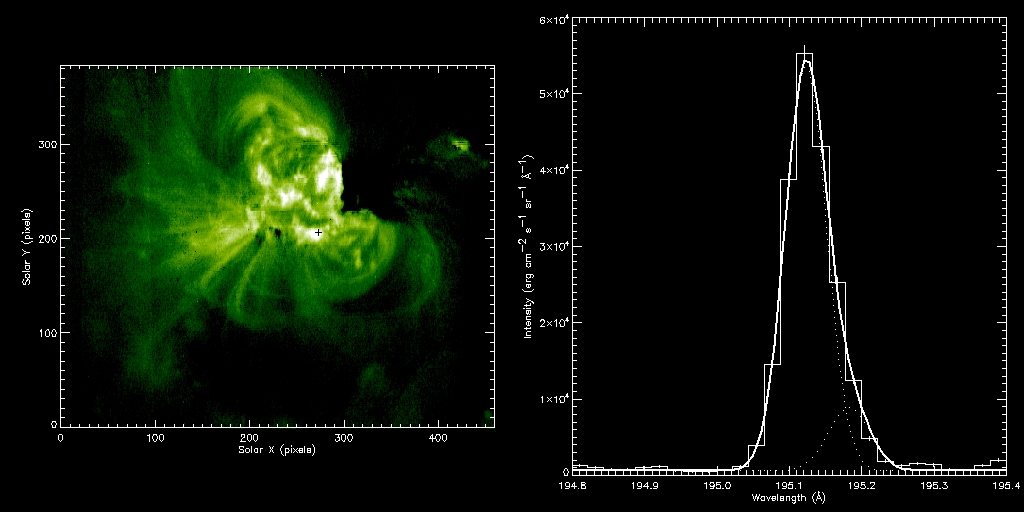This is EIS Discussion Area page.
#
A Comment on Using Fe XII 195 for Studying Nonthermal Widths and Doppler Shifts#
Fe XII 195 is a core line and is present in almost every EIS study. It has been noted, however, that there is a subtle contribution of Fe XII 195.18 to the wing of the observed line profile. This component is density senitive and can make an important contribution to the line in active regions. The intensity of this component is generally very small (<15% of the total), it does, however, alter the calculation of the line width and centroid. A two Gaussian fit can be performed on the observed line profile but it is necessary to constrain it. One scheme is to set the line widths of both components to be equal and to fix the difference between the two line centroids to be 0.06 Angstroms.
The following images illustrate the differences between a single Gaussian fit (top), a two Gaussian fit (middle), and a single Gaussian fit (bottom) to the Fe XII 192.394, which appears to be unblended.
 |
Here is an example profile fit. The image is the intensity in Fe XII 195.18.
 |
A detailed discussion on this can be found in the following paper by Peter Young. Also note that you can view higher resolution images by looking at the "Attach" tab.
by Peter Young. Also note that you can view higher resolution images by looking at the "Attach" tab.